It's easy to find fecal pollution in SWFL waters; what's hard is finding how to stop it
Codty Pierce pulls on one black glove (waste not, want not) then dips a lightbulb changing pole-turned-water sampler into the mangrove-lined canal. Once the small glass jar in its claw is filled, Pierce draws back the pole, screws on a black top and slips it into a padded case, noting time and conditions.
It’s a fine Saturday morning. Already, tennis players and dog owners are flocking to North Fort Myers’ waterfront Judd Park to play in the spring sunshine. But Pierce, the Calusa Waterkeeper, is there for public service science: testing the park’s paddlecraft launch for fecal bacteria. (The place is also popular with anglers, as the monofilament snarled in the mangroves shows.)
Maybe not the most glamorous work, but it’s critically important to watch and warn people about poop-polluted water, he says. Within hours, the lab will show Pierce’s sample to have more than double the amount of fecal bacteria that would trigger a public warning were the kayak launch a beach. Though Florida’s Healthy Beaches program has sampled waterfronts for fecal bacteria and made advisories when levels are unsafe for more than two decades, it’s a different story for freshwater sites like Judd Park.
Are you paddling through poopy water?
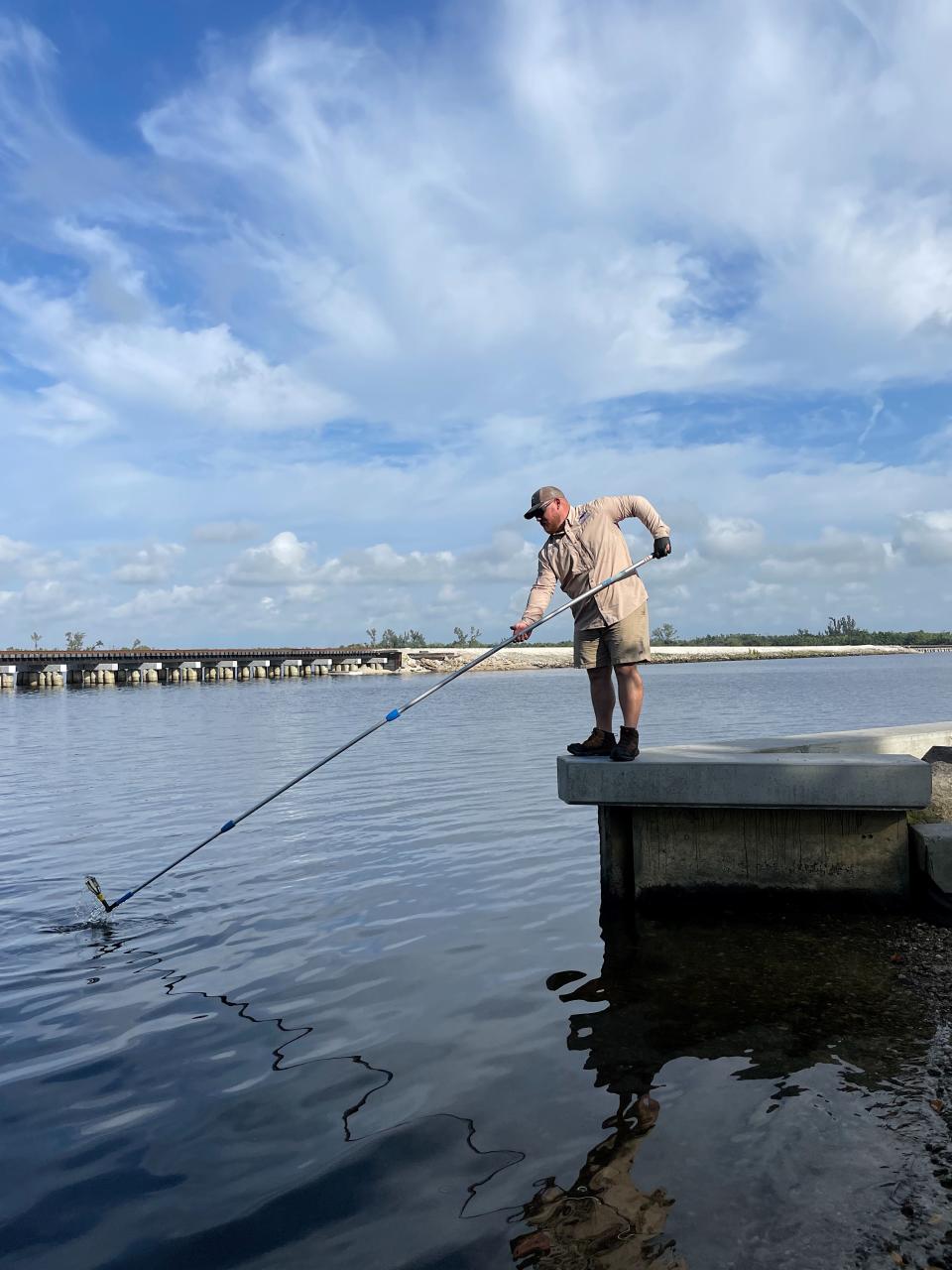
If boaters and fisherfolk don’t know to check Calusa Waterkeeper’s website or a state database, they’d have no idea that splashing with a cut or accidentally swallowing canal water might get them sick. There are no signs or rangers warning that for years, the water there has been chronically unsafe.
Those who waterski the Caloosahatchee, stand-up paddleboard Bonita Springs’ Imperial River or kayak Mullock Creek are similarly on their own.
Fecal pollution is everywhere in Southwest Florida. It flows past gracious riverfront neighborhoods in Fort Myers and laps against the landmark Naples Pier, where tests earlier this week showed unsafe levels of bacteria found in poop. But it's generally only noted on beaches, usually with press releases and signs.
That's because "The Healthy Beaches Program is limited to public bathing beaches as defined in Florida Statute," a Lee health department spokeswoman wrote in an email. "'Public bathing place' means a body of water, natural or modified by humans, for swimming, diving, and recreational bathing used by consent of the owner or owners and held out to the public by any person or public body (including), but not limited to, lakes, ponds, rivers, streams, artificial impoundments, and waters along the coastal and intracoastal beaches and shores of the state."
Calusa Waterkeeper works to fill the gap. It's has been documenting fecal pollution in those and other freshwater bodies throughout the region since 2017, but so far, there’s no state effort to mirror the Healthy Beaches program inland. That means people who use those waters can be exposed to off-the-charts levels of fecal bacteria compared to what would trigger a beach warning.
Calls to members of the Florida legislative including Sens. Kathleen Passidomo, R - Naples,Ben Albritton, R-Bartow and Jonathan Martin, R-Fort Myers and Rep. Tiffany Esposito, R-Fort Myers were not immediately returned, but it might be assumed they don't oppose extending protections inland, because the years-in-the-works Safe Waterways Act was unanimously approved earlier this month in both chambers and awaits Gov. DeSantis' signature.
A collaboration between first Calusa Waterkeeper John Cassani and Sen. Lori Berman, D-Delray Beach, the original proposed law, which didn't pass, would have broadened the definition of public bathing places tested for fecal indicator bacteria by the Florida Department of Health, required consistent notification and signage procedures, and established a statewide public database. It sputtered for a couple of years, until a toned-down version gained traction this year.
Is it everything Cassani wanted? No. Is it a good start? Yes. Which, he says, “is a reflection of how widespread and bad the problem has become … (pollution) has become a more personal experience for so many more people now and some of them are legislators. They understand now: Someone got sick when they went in the water.”
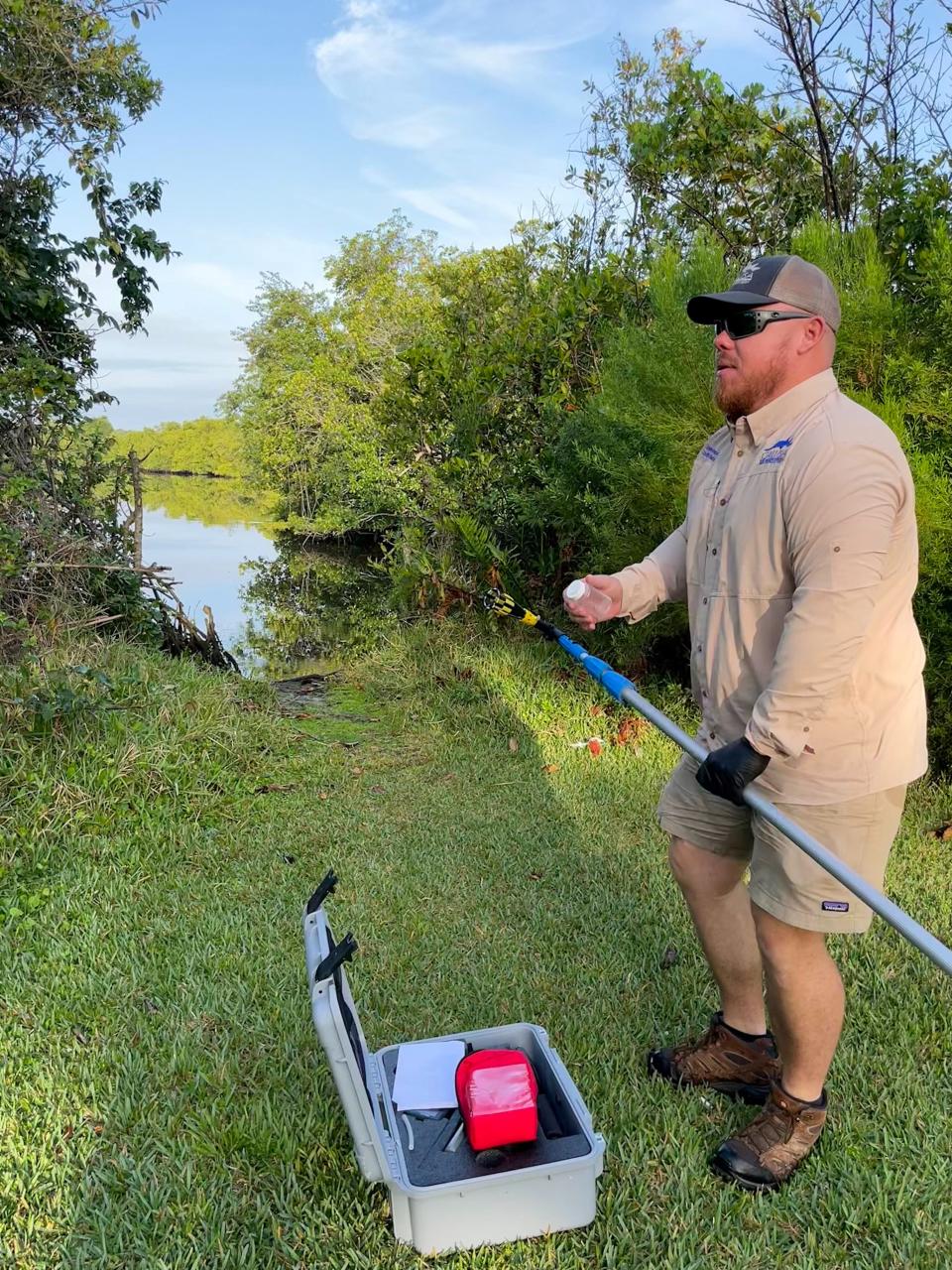
How do we know it's fecal pollution?
On beaches the state looks for Enterococci, “enteric (gut-dwelling) bacteria that normally inhabit the intestinal tract of humans and animals,” according to the Department of Health in Florida. Their presence “can be an indication of fecal pollution, which may come from stormwater runoff, pets and wildlife, and human sewage. If they are present in high concentrations in recreational waters and are ingested while swimming or enter the skin through a cut or sore, they may cause human disease, infections or rashes.”
Measured in groups called colony forming units, the state program assigns these ratings to sampled water:
Good = 0-35 Enterococci per 100 milliliters of marine water
Moderate = 36-70 Enterococci per 100 milliliters of marine water
Poor = 71 or greater Enterococci per 100 milliliters of marine water, the advisory-triggering threshold.
Remember that number 71? Compare that to San Carlos Park’s Mullock Creek, which had 10,462 last week – more than 148 times the state’s beach safety level, and a jump from February's 465.
A few other sites' February and March numbers: The Imperial River's Kayak launch in Bonita Springs was 471 in March and 794 in February. North Fort Myers' Judd Park was 189 in March and 345 in February. And Manuels Branch in Fort Myers, with four monitoring sites, ranged from 677 to 4,352 in March and 1,664 to 2,755 in February.
You can see the problem, says Pierce, who, along with a corps of volunteers, samples the creek and more than 30 other sites throughout Lee County.
If we can send people to the moon, he wonders, how come we can’t keep our poop out of the water? "We have a sound water testing program now; we’ve dotted the “i”s and crossed the “t”s so the next step is how do we leverage this data to really get some things done?" he asks.
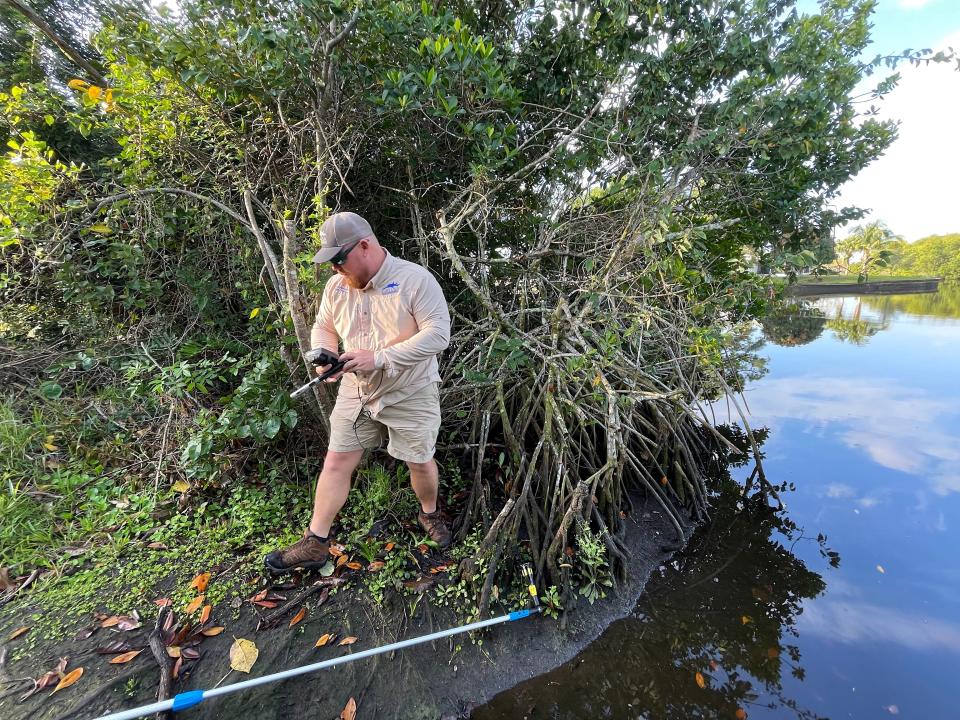
Fecal contamination in Florida’s waterways including many sources: untreated stormwater, old or overburdened wastewater treatment plants, leaky septic tanks, and animals both wild and domestic.
The problem has swollen with Florida’s population boom, but restoration hasn't kept pace with pollution.
"It’s still just incredible that our basic bodily functions can’t be processed and managed in an appropriate manner,” Pierce said. “For a sophisticated society, we’re still having some of the most basic maintenance issues.”
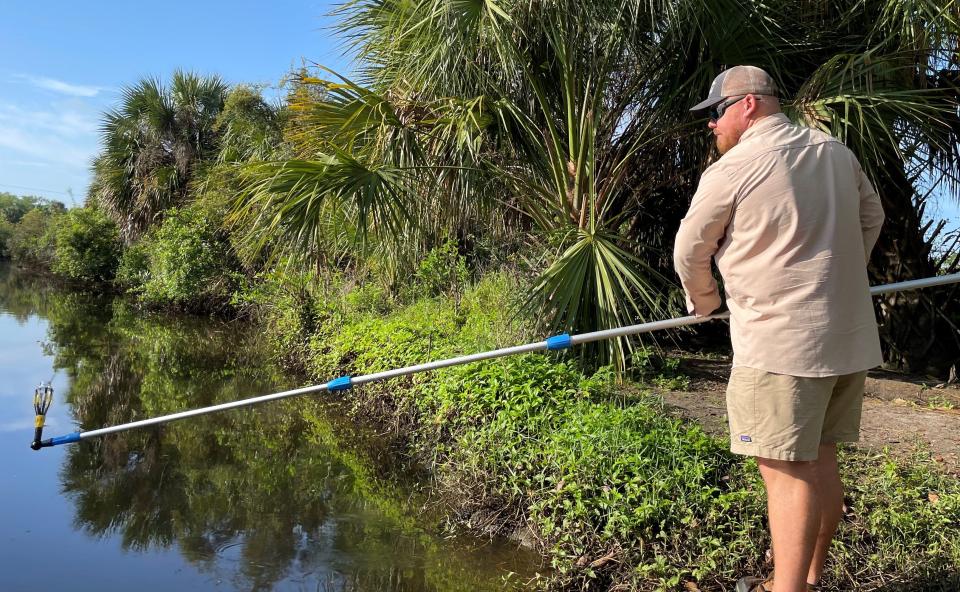
Contribution to pollution Study finds huge septic system dysfunction in North Fort Myers
Making things worse: There's currently no statutory requirement to inform the public of such threats to their health.
Florida Gulf Coast University Water School Professor Barry Rosen points out that enteric bacteria is everywhere. “Just about any kind of animal, including flies, have E. coli in their guts,” Rosen said. “And in these waterways, if there’s any kind of animal usage – it can be ducks, anything like that."
True, says Pierce, but poop is poop and he still wants people to be able to know where concentrations are highest. And he’d love to be able to identify sources, but that kind of testing is expensive, so fundraising is a priority.
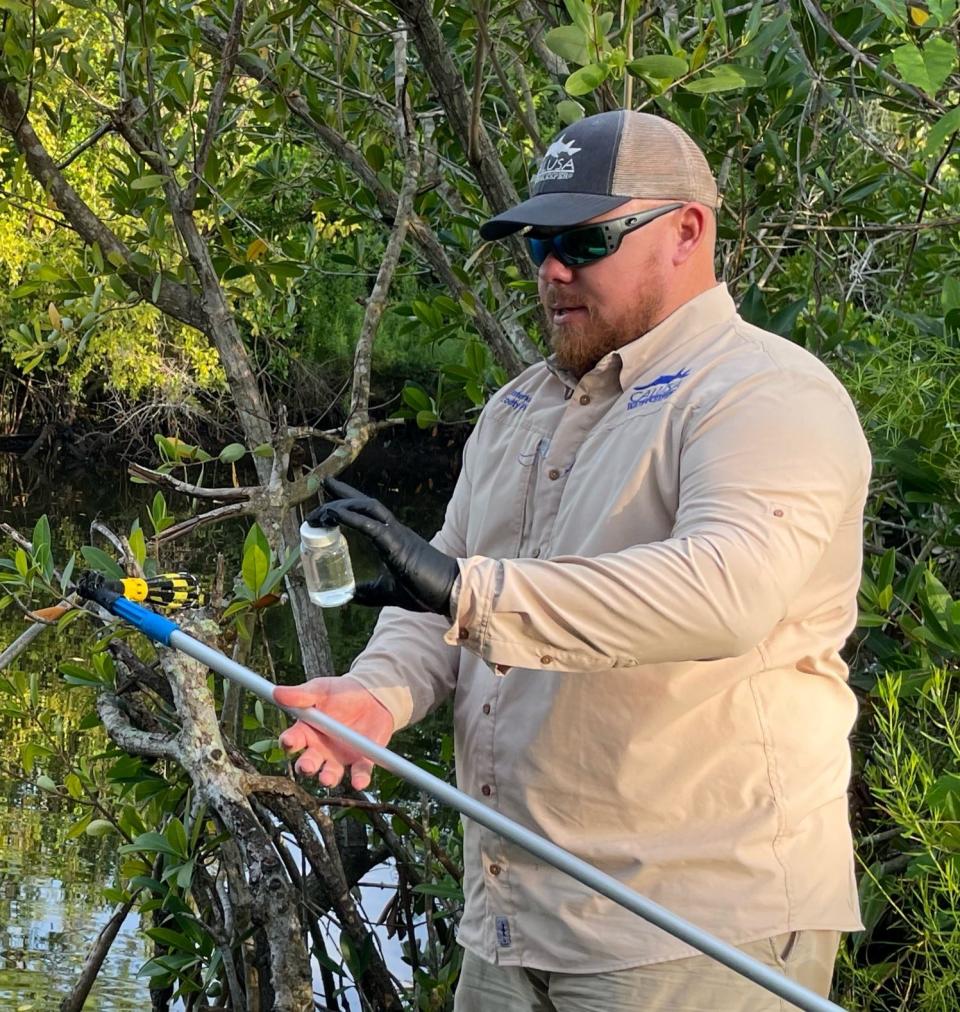
'A fountain of raw sewage': Why one Fort Myers neighborhood dreads heavy rains
Complicated problem, complicated solutions, says Sanibel-Captiva Conservation Foundation's Environmental Policy Director Matt DePaolis.
“Solutions are difficult with this one,” he said. “There's a need for us to get as much density off septic as possible. Septic certainly has a good place in the world (but) I think that place is generally the middle of nowhere in the Great Plains and have room for a drainage field, but not concentrated in porous limestone bedrock.”
Beyond the Safe Waterways Act, he and Pierce both see other steps in the right direction, such as Lee commissioners voting this week to accept a state grant for $1.5 million for a septic conversion project to move 85 homes on Billy Creek and the Orange River to central sewer.
“Stuff like that’s going to be huge,” DePaolis said.
Then there's the human factor. “I’ve yet to meet anyone who doesn’t want clean water,” he said. “What gets in the way is a lot of finger-pointing. People say, 'Well, the lake’s the problem, so let's not focus on septic,' or 'Septic’s the problem, so let’s not focus on ag.'
"You get in these circular arguments where everyone’s pointing the finger somewhere and that really bogs down a solution that needs to incorporate all of these issues. Because it is ag. And it is septic. And it is the lake ... all of these things we can improve upon. And when we do, we’re gong to have much cleaner water.”
Where's the poop?
This isn’t a complete list, but in Lee County, waterbodies with fecal bacteria pollution verified by the state include: Bedman Creek, Cypress Creek, Olga Creek, Telegraph Creek, the Caloosahatchee estuary, Yellow Fever Creek, Hancock Creek, Daughtry Creek, Whiskey Creek, Powell Creek, Popash Creek, Matlacha Pass, Oak Creek and Whiskey Creek.
In Collier County, they include: Coastal Naples Bay, Spring Creek, the Ten Thousand Islands, Gordon River, lower Haldeman Creek, Rock Creek and coastal Rookery Bay.
The complete database is here: https://floridadep.gov/dear/watershed-assessment-section/documents/comprehensive-verified-list
Calusa Waterkeeper's fecal indicator monitoring reports are online here: https://calusawaterkeeper.org/issues/bacteria-monitoring/
This article originally appeared on Fort Myers News-Press: SW Florida fecal pollution: Do you know if your creek is contaminated?

